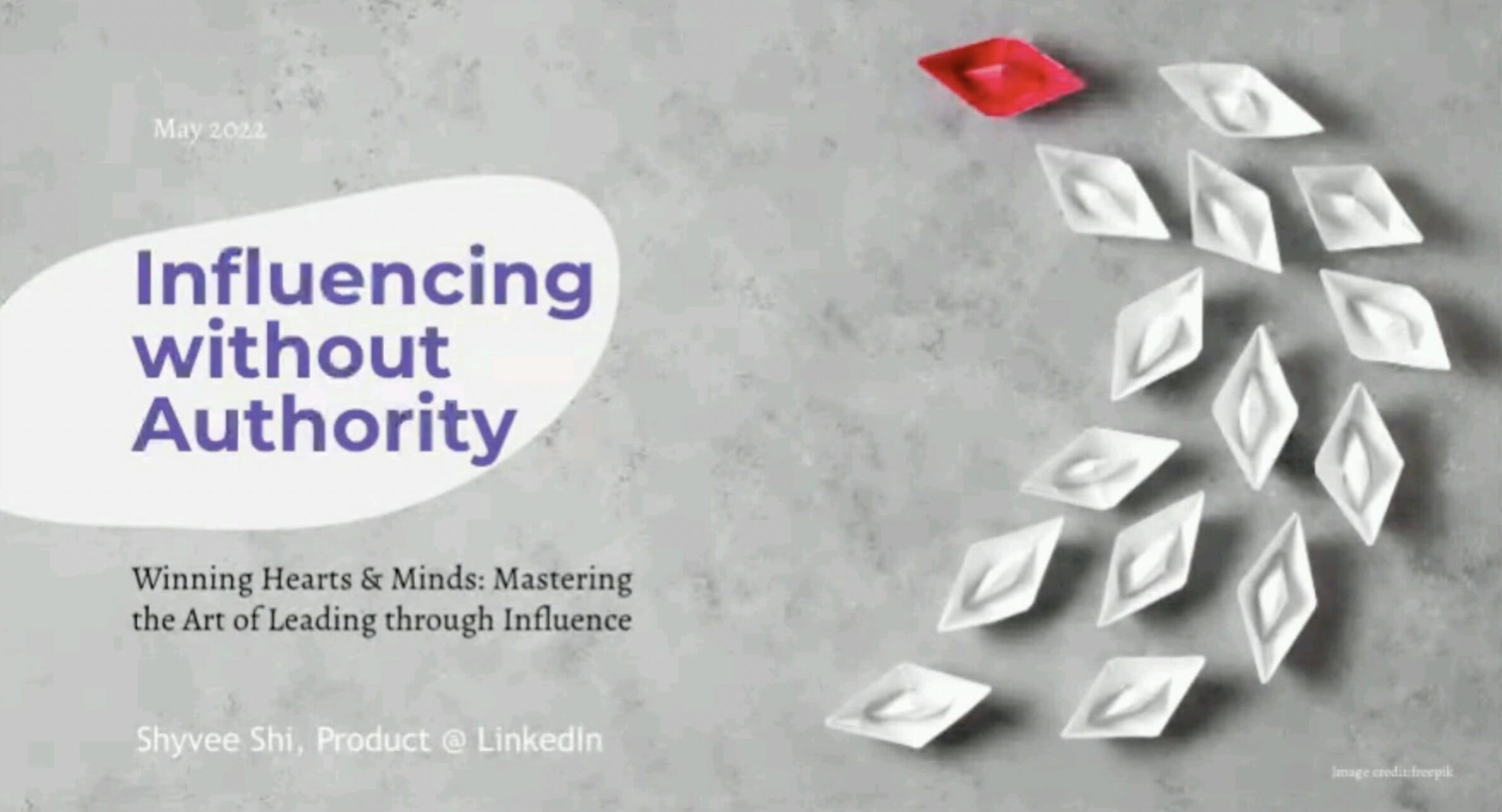On March 10 at the Barbican, London, we welcomed over 100 product leaders to our Mind the Product Leadership Forum. During the day, we were joined by great speakers and engaged in some constructive roundtable discussions.
We put this event together to help product leaders connect, learn from one another, and grow. Read on for some key takeaways from the keynote sessions and panels.
Joe Leech, a Product Leadership Coach, kicked off the day. In his day job, his goal is to bridge the gap between product leaders and executives. He had a few key messages that resonated with us.

Joe explained how the best companies define their own rules and strategies rather than following a prescribed playbook. “To be a successful product leader, you need to understand the rules well enough to break them effectively and play your own game. Leadership is a constant journey of change—there is no final destination, only continuous growth.” Joe explained.
Navigating leadership challenges means dealing with confusion, anxiety, resistance, and frustration. A leader's role is not to guarantee success but to create the conditions for it.
“This means understanding the difference between minor distractions and significant challenges. Leaders must be able to distinguish between umbrellas and buses.” Joe said. In other words, concluding what is merely inconvenient versus what could derail progress.
Joe added how it's common for C-suite executives to default to scepticism, with statements like "this won't work" or "the competition isn't doing this." The challenge for a product leader is to navigate these objections and create momentum despite them.
Fear is a natural part of leadership, Joe noted, but it is the reaction to fear that defines success. Imposter syndrome, self-doubt, and external pressures often pull leaders back into their comfort zones.
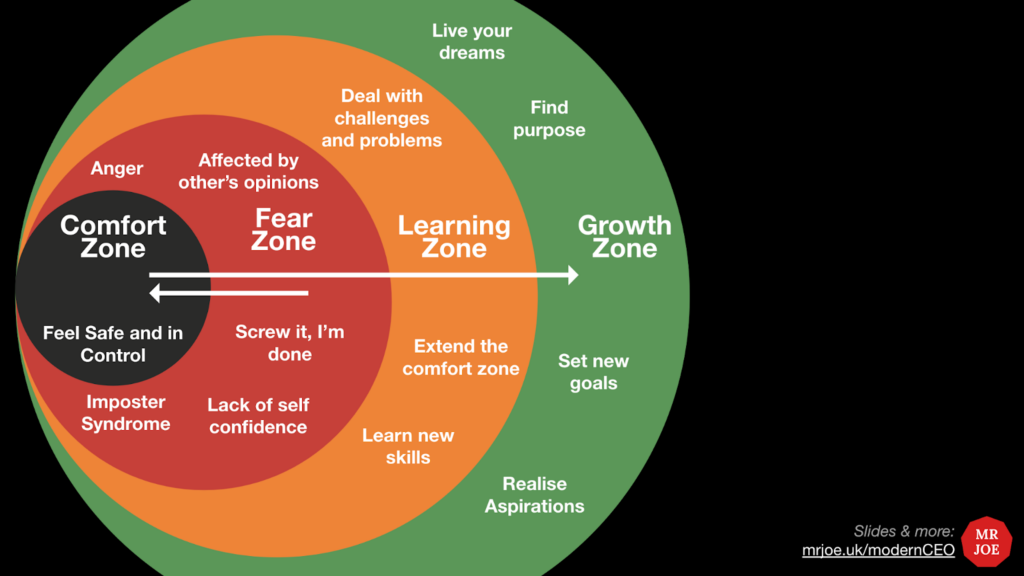
“Those who push forward move into the learning zone, where they develop new skills, overcome challenges, and extend their capabilities. Beyond that lies the growth zone, where leaders find purpose and pursue ambitious goals.”
Joe highlighted how effective leaders embrace problems and run toward them rather than avoid them because stress often comes from ignoring what should not be ignored. He challenged us to ask questions like "How could this be fun?" could actually transform leadership into an engaging and rewarding experience.
Ultimately, shifting the mindset from fear to curiosity, an from avoidance to action, makes all the difference.
Following the great session was a panel discussion featuring Trisha Price (Field CPO at Pendo), Jo Wickremasinghe (CPTO at BPP Education Group), Rhiannon White (CEO at Clue), and Joe Leech (Coach to CEOs at Mr Joe). They discussed the role of founders in product strategy and the challenges of entering a founder-led company as a product leader.
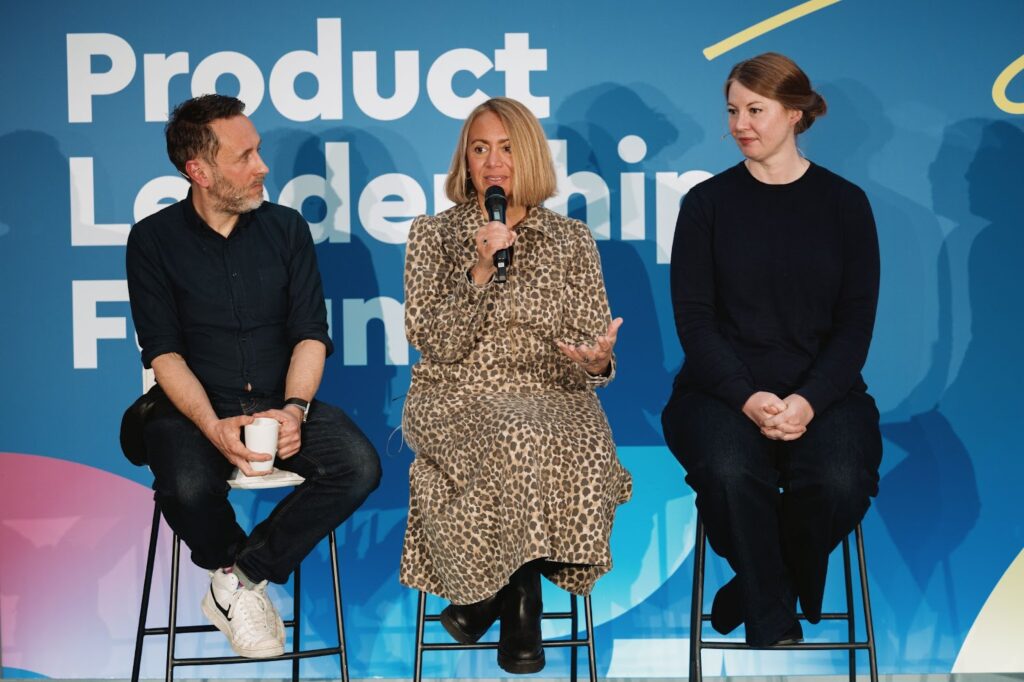
Trisha highlighted how Founders play a pivotal role in shaping product strategy. Entering a founder-led company as a product leader requires careful navigation. Trust and alignment are essential, as is understanding how product strategy aligns with the company's broader objectives. We learned from the panel that product leaders must build relationships across the leadership team, particularly with the CEO and CRO, forming a strategic triangle that ensures product and revenue strategies are in sync. Aditioanlly, when entering a company as a product leader, it was highlighted that finding product-market fit takes time, and leaders shouldn't expect to solve fundamental challenges in just a few months, even if metrics going in the right direction.
Communication is a key skill across product management, but especially at the executive level. The panel stressed how product leaders must articulate value in the language of business rather than expecting others to adapt to product terminology. Providing clarity builds trust, giving teams the confidence to execute. There is also an ongoing debate about whether product leaders should have revenue targets. While not always necessary, understanding P&L responsibilities can be crucial for career growth, particularly when dealing with a board focused on financial performance. However, despite conflicting opinions over revenue targets, the panel was unanimous that product teams should always keep the revenue of the business in mind when making decisions.

The final topic focused on career progressions in product. It was noted how stepping into leadership requires a shift in key responsibilities from execution to strategic thinking. Junior product professionals can become overly fixated on frameworks and processes, but real impact comes from execution and delivering value. The panel highlighted that product teams must shift from a mindset of saying "no" to "or", ensuring they serve the business while maintaining strategic direction. Defensiveness over deadlines and features can be a liability—leaders must communicate challenges without becoming protective.
Finally, we learned that there is no single "right way" to be a CPO or CEO, but adaptability and the ability to balance competing priorities are key.
More than half of M&A deals destroy value for the acquiring company, often due to misaligned strategies and operational inefficiencies, a stark reminder for business and product leaders alike. In the afternoon keynote session, Vincent Jong, CPO at Dealfront, led a great session on how to lead a successful acquisition from a product standpoint.
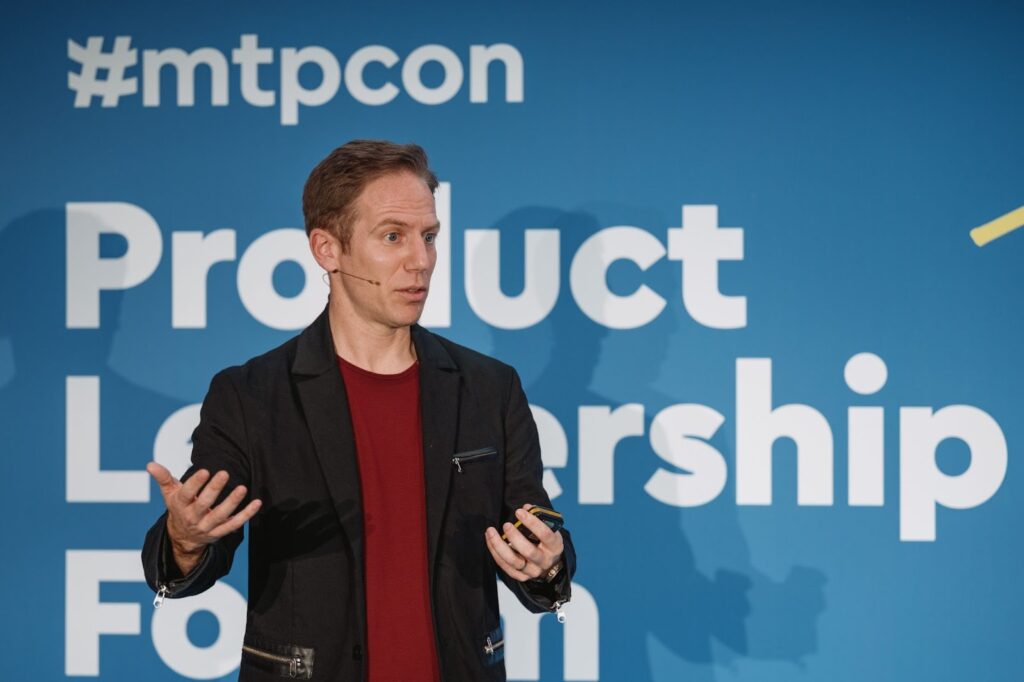
Successful integration begins with clearly defining the type of acquisition, its goals, and the timeline for execution. Without this foundation, companies risk revenue loss, operational friction, and knowledge gaps that hinder success.
Vincent noted how one of the biggest challenges of an acquisition is managing unknowns. Leaders must be prepared to address gaps in knowledge, inconsistencies in analytics, and shifts in responsibilities that often accompany mergers. Changes to an existing product offering can put revenue at risk, making careful experimentation essential. Retaining institutional knowledge is another challenge, as key individuals often leave during an acquisition, taking critical insights with them.
Vincent explained that soft issues, such as cultural differences, are frequently overlooked but can be just as damaging as financial or operational missteps. Changing behaviours in a sustainable way is difficult, and integration efforts often feel rushed due to time constraints.
The lesson for product leaders is to stay focused on clear objectives, set achievable mid-term goals, and make difficult decisions on strategy and vision early rather than postponing them.
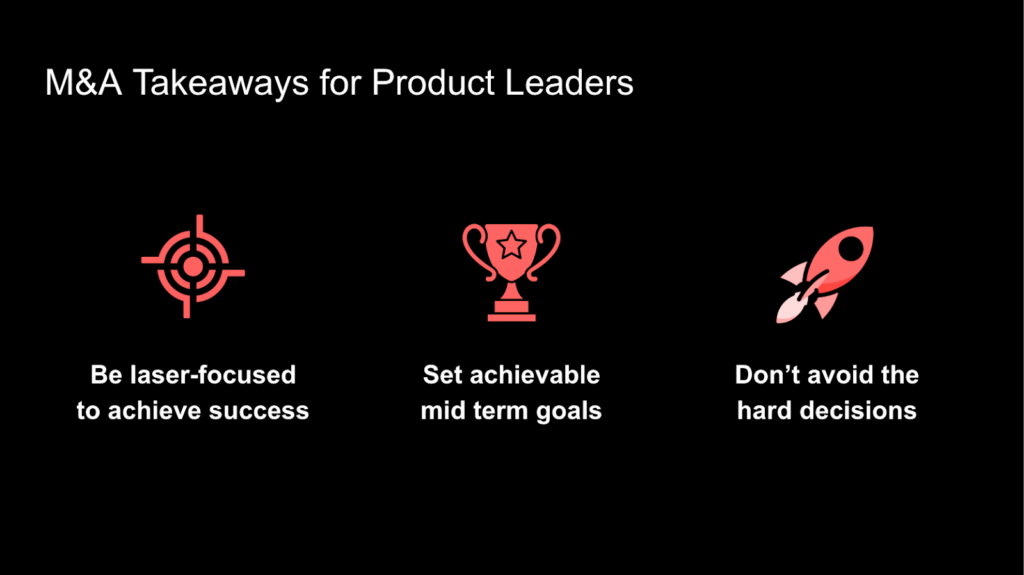
In the closing session for the day, Mike Belsito, Senior Director of Mind the Product, was joined by Megan Quinn, ex Product Leader at Google, startup investor, company builder and public/private board director.
One of the first lessons from their conversation was a shift in mindset when entering leadership. Moving from being a "doer" to being a coach demands patience, structured feedback loops, and a steady, level-headed approach. “Product leadership is not just about execution—it's about taste. The best leaders develop an exquisite sense of what makes a great product for their customers, a skill honed through time and experience,” Megan explained.
AI is changing the product landscape, automating certain tasks and increasing efficiency. However, while AI can enhance productivity, Megan noted that it lacks intuition and product sensibility. “The best product managers will be those who possess the vision to guide AI rather than be replaced by it,” she said, “Competitive advantage will not come solely from efficiency but from companies that can cross the chasm faster and create transformative experiences.”
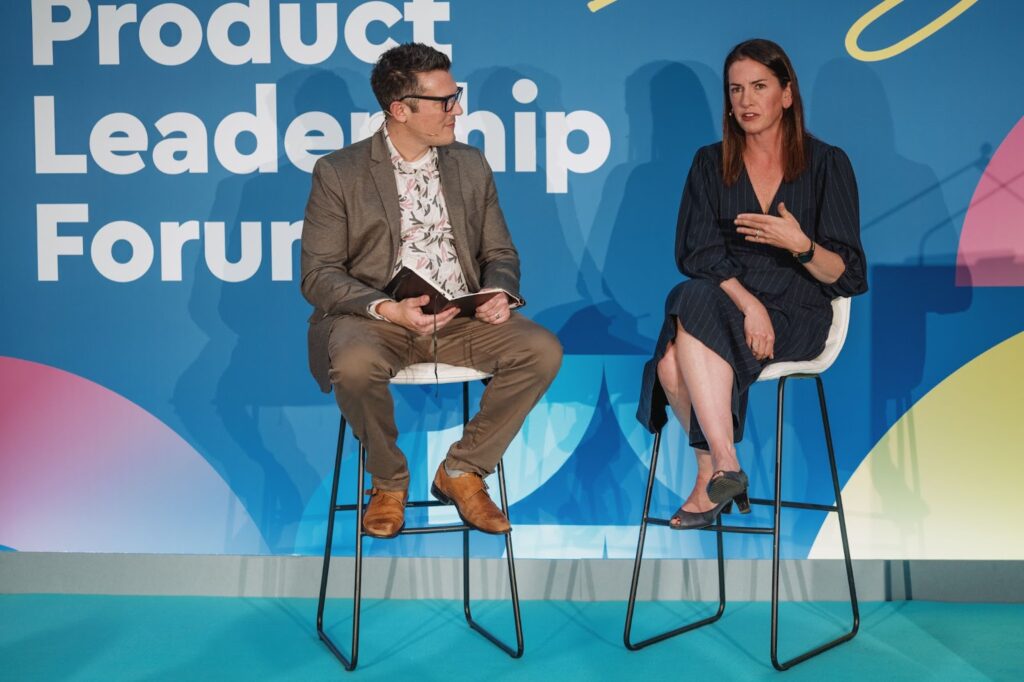
To fully integrate AI, product teams must ensure it operates as a horizontal layer across the company rather than being confined to a single function.
Scaling product teams as a leader presents unique challenges. As companies grow, leaders inevitably become further removed from customers. Maintaining close ties to user needs becomes more difficult, and collaboration with design and engineering can weaken as responsibilities expand. Megan noted that, based on her experience, communication breakdowns occur every time a company adds another 30 employees, making proactive alignment essential. Leaders must adopt structured communication practices earlier than feels necessary—as by the time they become essential, it is often too late.
What do great product leaders excel at? Making the implicit explicit. “They leave nothing unsaid and ensure that roles and responsibilities are clearly defined,” Megan noted.
Another hallmark of effective leadership is fostering a deep sense of company purpose—investing in what some call ‘company love.’ Measuring this is difficult, but the most successful teams understand that engaged employees and inspired teams drive long-term success.
The nature of product strategy is evolving. Megan stressed how the best product strategies today have a short shelf life—leaders must define a one-year vision while maintaining the flexibility to adapt quarterly. As leaders, encouraging internal debate and stress-testing strategies through prototypes and wireframes can strengthen decision-making. “In a world where AI is accelerating change, human creativity, intuition, and strategic foresight remain the most valuable assets for product leaders.”
Megan closed with a final lesson for product leaders to take into their regular practices: “As technology advances, product management will continue to shift. Those who remain in product as the world changes will be more strategic, more experienced, and more valuable than ever. Taste, judgment, and human ingenuity will define the next generation of great product leaders.”
Many thanks to our keynote speakers, panellists, roundtable moderators, and volunteers who helped put on this great forum. We hope you found it valuable. What was your biggest takeaway from the day? Catch our recap of #mtpcon London 2025.




